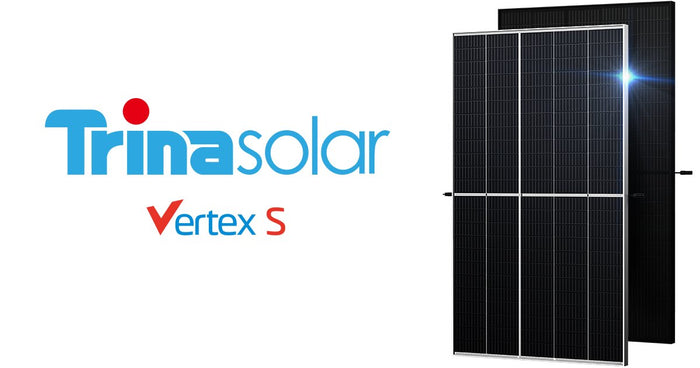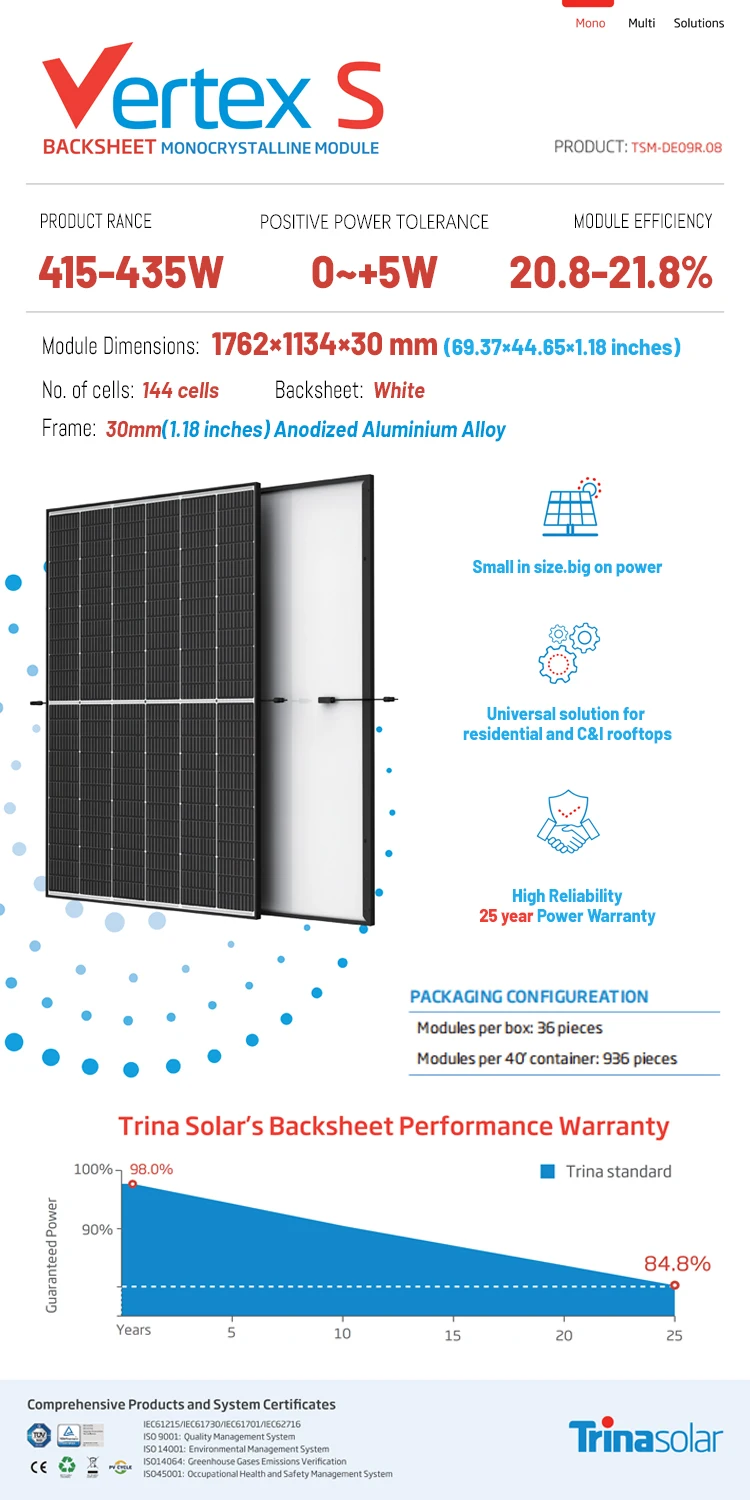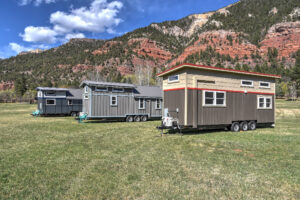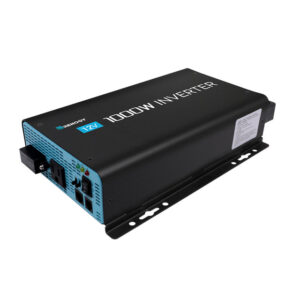
Article-at-a-Glance
-
Trina Vertex S solar panels offer high efficiency and are well-suited for tiny homes.
-
Compact design and high energy conversion rates make Vertex S panels space-efficient.
-
Dual glass design enhances durability and performance in diverse weather conditions.
-
Understanding the installation process is crucial for maximizing solar energy benefits.
-
Cost and savings analysis shows the long-term financial benefits of investing in solar technology.

Why Trina Vertex S is Ideal for Tiny Homes
Space-Saving Solar Technology
When you’re dealing with limited roof space, every square inch counts. That’s where the Trina Vertex S panels shine. They are designed to fit snugly on the roofs of tiny homes, ensuring that you’re able to harness the power of the sun without the need for a sprawling array. The compact design doesn’t just save space; it maximizes the energy you can produce per square foot, making it a smart choice for those who want to live big while living small.

High Energy Conversion Rates
Efficiency is key when you’re off-grid, and the Trina Vertex S panels deliver. With efficiency rates reaching up to 22.5%, these panels ensure that more of the sunlight hitting your roof is converted into usable electricity. This means you’ll need fewer panels to meet your energy needs, which is a big deal when your living space is measured in square feet, not acres.
Weather Resistance and Durability
Living off-grid often means facing the elements head-on. Trina Vertex S panels are up to the challenge, built with a dual glass design that stands strong against high winds, heavy snow, and driving rain. The extra layer of protection means your investment is safe, no matter what Mother Nature throws your way.
Understanding the Vertex S Solar Panels
The Engineering Behind the Efficiency
The secret to the Trina Vertex S panel’s high efficiency lies in its cutting-edge engineering. Using advanced cell technology, these panels capture more light and convert it into energy more effectively than standard models. This technology is what gives the Vertex S its edge, allowing you to enjoy reliable power while living off the grid.
Features That Set It Apart
Besides their impressive efficiency, Trina Vertex S panels boast a range of features that set them apart from the competition. For instance, their dual glass design not only adds to their durability but also enhances their performance. The panels are also equipped with multi-busbars, which minimize the risk of micro-cracks and ensure that your panels keep producing energy even if they’re partially shaded.
Dual Glass Design Benefits
The dual glass design of Trina Vertex S panels isn’t just about weather resistance. It also plays a significant role in the longevity of your solar system. By protecting the solar cells from the environment on both sides, the panels are less likely to degrade over time. This means you can count on your solar system to keep powering your tiny home for years to come.
Trina Vertex S Specifications
|
Feature |
Details |
|---|---|
|
Type of Solar Panel |
Monocrystalline |
|
Lifespan and Warranty |
25-year product workmanship warranty, 25-year power warranty, 0.55% annual power attenuation, 2% first-year degradation |
|
Solar Power Efficiency |
Up to 21% efficiency for Trina 415W Solar Panel |
|
Cost Range |
$205-$250 per panel |
|
Panel Size |
1754×1096×30 mm, 21.0 kg for Trina 415W Solar Panel |
|
Industry Standard Certifications |
IEC and UL certifications, IP 68 rated, Maximum system voltage: 1500V DC |
Installing Trina Vertex S in Your Tiny Home
Tools and Materials Needed
Before you start the installation of your Trina Vertex S solar panels, make sure you have the right tools and materials on hand. You’ll need a drill, screws, a ratchet set, sealant, and the mounting system designed for your specific roof type. Additionally, ensure you have the solar panels, inverters, and all necessary electrical components such as wiring and connectors.
Step-by-Step Installation Guide
-
Assess Your Roof: Check the condition of your roof to ensure it can support the weight of the panels and the mounting system.
-
Plan Your Layout: Map out where each panel will go, keeping in mind factors like shading and the direction your roof faces.
-
Install Mounts: Securely fasten the mounts to your roof, using sealant to prevent any leaks.
-
Attach Panels: Place the panels onto the mounts and secure them with the ratchet set.
-
Wire the System: Connect the panels to your inverter and then to your home’s power system, following all electrical codes.
-
Ground the System: Ensure your system is properly grounded to protect against electrical surges.
-
Test the Setup: Once everything is installed, test the system to make sure it’s functioning correctly.
Cost and Savings Analysis
Upfront Investment vs Long-Term Savings
The initial cost of installing Trina Vertex S solar panels can vary, but you can expect to spend anywhere from $1,000 to $5,000 depending on your tiny home’s energy needs. However, the long-term savings are substantial. By reducing or eliminating your reliance on the grid, you can save thousands of dollars in utility bills over the lifetime of your solar system.
Most importantly, consider the cost of not going solar. Traditional energy prices are subject to fluctuation, often increasing due to various factors beyond your control. Solar energy provides a level of predictability and independence that is financially advantageous over time.
Comparing Energy Sources for Cost Efficiency
When comparing solar to other energy sources, solar often comes out ahead in terms of cost efficiency. For example, the average cost of electricity from the grid can range from 10 to 30 cents per kilowatt-hour, whereas the cost of solar energy, after the initial investment, can drop to effectively zero since sunlight is free.
Warranty
Trina Solar offers a robust warranty for the Vertex S panels, including a 25-year product warranty and a 30-year performance warranty. This means that not only is your initial investment protected, but you also have the peace of mind that your panels will perform efficiently for decades.
Maintaining Your Off-Grid Solar System
Monitoring Panel Performance
Keep an eye on your solar panel performance to ensure they are operating at peak efficiency. Most solar systems come with monitoring software that allows you to track energy production in real-time. Regularly check this data to spot any potential issues early on.
By staying on top of maintenance and monitoring, you can extend the life of your solar system and maximize your energy savings. Remember, a well-maintained solar system is not only more efficient but also more cost-effective in the long run.
Frequently Asked Questions
How Much Power Can the Trina Vertex S Generate for a Tiny Home?
The amount of power a Trina Vertex S panel can generate for a tiny home depends on several factors, including the number of panels installed, the geographic location, and the amount of sunlight the home receives. Generally, a single Vertex S panel can produce between 405W to 450W. For a tiny home, a small array of these high-efficiency panels can often cover its energy needs, but you’ll need to calculate your specific energy consumption to determine the exact number of panels required.
Can the Vertex S Panels Withstand Extreme Weather Conditions?
Absolutely. The Trina Vertex S panels are built to endure extreme weather conditions. Their dual glass design and robust construction mean they can withstand high winds and heavy snow loads. In fact, these panels are certified to handle wind loads of up to 2400 Pa and snow loads of up to 5400 Pa, ensuring they remain operational and intact even in harsh environments.
What is the Expected Lifespan of the Trina Vertex S Panels?
Trina Vertex S panels are designed to last. With a 25-year product warranty and a 30-year performance warranty, you can expect these panels to provide sustainable energy for decades. The dual glass design also contributes to their longevity by protecting against environmental stressors that can cause degradation over time.
How Does the Installation of Solar Panels Affect the Value of My Tiny Home?
Installing solar panels can significantly increase the value of your tiny home. Not only does it reduce or eliminate electricity bills, but it also makes the home more attractive to potential buyers who are interested in sustainability and independence from the grid. It’s an investment that pays off both in the short term and when it comes time to sell.
Are There Any Rebates or Tax Incentives for Installing Trina Vertex S Panels?
Many regions offer rebates or tax incentives for installing solar panels. These can significantly reduce the upfront cost of your solar system. It’s important to research the specific incentives available in your area, as they can vary by state and country. The Database of State Incentives for Renewables & Efficiency (DSIRE) is a great resource for finding information on incentives in the United States.
Regular Maintenance Checklists
To ensure your off-grid solar system continues to operate at its best, you should perform regular maintenance. Here’s a simple checklist to follow:
-
Clean the panels periodically to remove dust, dirt, and debris that can block sunlight.
-
Check for any physical damage, such as cracks or loose connections.
-
Ensure the mounting system is secure and free of rust or corrosion.
-
Monitor the system’s energy output to detect any irregularities or drops in efficiency.
-
Have a professional inspection done annually to assess the system’s health.
By following these steps, you’ll keep your solar system running smoothly and efficiently, providing clean energy to your tiny home for years to come.



